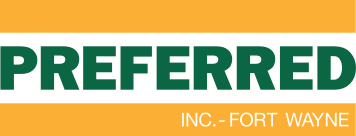How to Hire a Qualified Painting Contractor
PART 8
An industrial painting project keeps your facilities looking and functioning their best. They not only help boost the morale of employees, customers, and clients, but even support workplace safety goals. Likewise, a botched project can undermine all your hard work.
Vetting industrial painting contractors puts facilities managers in a tough spot. Industrial painting projects can’t go to just anyone who can hold a paint roller. Yet, smaller, less experienced firms are often attracted to these jobs based on their higher profit potential.
Contractors will do everything in their power to persuade you that they’re qualified for the job. They may even offer remarkable prices based on a lack of experience planning such a project.
However, the upfront savings (if any) will quickly be offset by delays and quality issues.
The Internet offers unprecedented power for any company to present itself as the solution for any situation. That means the hiring process needs to be more thorough than ever before.

Your Statement Of Work Is Your Most Powerful Asset
Hiring for industrial painting should start early so you can design a Statement of Work in-house.
A Statement of Work is the ultimate tool for avoiding contractors who can’t meet your standards.
When you’re able to lay out a complete SOW in writing, you establish clear standards – and, to an extent, reduce liability by ensuring any bidder must assert their willingness and ability to perform according to those requirements.
An industrial painting SOW should include:
- The specific areas of your facility to be painted, in as much detail as possible.
- Special considerations, such as caulking and priming, throughout the project.
- Restrictions needed to prevent business disruption, such as night-only work.
- The ultimate deadline of the project, as well as specific milestones to be met.
Five Things To Check During Contractor Selection
It’s a good idea to solicit estimates from at least 2-3 firms to ensure you have a broad range of potential vendors. Especially low and especially high bids should be accorded extra scrutiny.
Vendors serious about a job should be willing and able to submit all the documentation you will need to evaluate their bid – and they should do it promptly. This demonstrates professionalism, and reduces the time you’ll need to spend hunting online for information.
That said, be sure to look closely at these areas:
Recent Clients
A contractor’s typical client is a good barometer of the type of work they do and the standards they are able to meet. Ideally, they should be able to point to recent projects similar to your own. It’s also usually a good sign when a contractor has performed military projects. These involve strict deadlines, as well as health and safety compliance.
Team Composition
It takes more than painters and equipment to execute a large industrial painting job. When a business is ready to tackle a big project, it has the right support personnel to deliver excellence. Be sure your would-be contractor has these professionals on the payroll:
- A safety coordinator with active certifications from OSHA and CERT.
- Sourcing, logistics, fleet management, and DOT compliance personnel.
- A quality control supervisor with active SSPC and NACE certification.
- A “point-of-contact” project manager experienced in project estimating.
- Appropriate accounting, administrative, and customer service personnel.
Demanding Projects
A contractor’s ability to service complex, difficult projects is a reflection of skill. Even if your worksite isn’t especially challenging, it’s reassuring when a bidder lists sophisticated, highly visible work like facility exteriors, and storage tanks, for example.
Safety Training
Safety should be a priority on any project site. It’s up to the contractor to bring the right safety expertise to bear every time. Contractors should furnish documentation on key certifications. The following certs offer a good foundation for safety performance:
- OSHA 30-Hour for General Industry or Construction.
- Fall Protection Training.
- Confined Space Training.
- Respirator Training.
- Hazcom Training.
- Scaffold Training.
- Lead Training.
References
If you’re satisfied by the fundamentals, you can look at references. Online reviews are an okay place to start, but they can be manipulated or manufactured, so take them with a grain of salt. If you encounter unfavorable reviews, check to see if the company has responded directly to the customer and resolved the issue. Negative feedback without a response is a red flag. When interviewing a contractor, you can draw on posted feedback to ask them the tough questions. Ideally, contractors will put you in direct contact with at least 5-10 satisfied clients.
Hiring A Qualified Contractor: Right Way, Wrong Way
Jim believes in hiring people he “feels good” about. He hits it off with a contractor – who happens to be the low bidder – without checking references or safety credentials. The contractor doesn’t have the right expertise, so the “cheap” option ends up taking four extra months.
Rob checks out potential contractors from top to bottom. After ruling out the low bidders for not having the right experience, he grills a mid-sized contractor team about past projects and some negative online feedback. Their answers and other qualifications impress him, so he picks them.
Remember:
- Under-qualified contractors will fight hard to convince you they can handle your job.
- Your Statement of Work is the most useful tool for weeding out unqualified bidders.
- References, past projects, training, and client feedback should all inform your choice.

